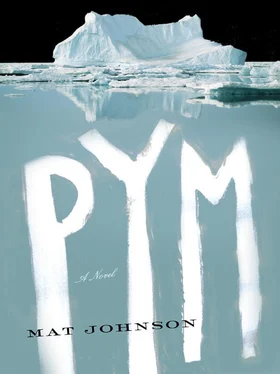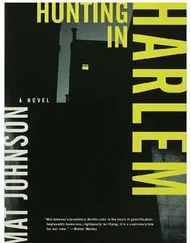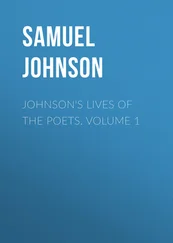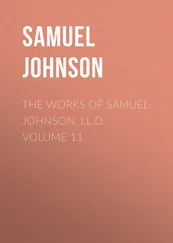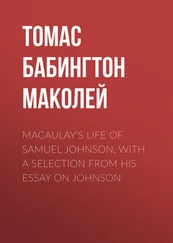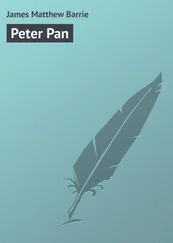“I told you. I’m suing the damn college. I’m getting paid back for all those books. For what they did. They’re responsible.”
“Oh hell no. Don’t talk that lawsuit nonsense. I’m not waiting to get paid for some court to make a decision. This is going to cost you cash. Today.”
I agreed, got the money for him. Even untenured professors at private colleges make a decent salary, and you add up 10 percent of that each year for several years and you get a decent chunk. It was money I needed, but I needed the pain to stop more. When I came back in the room, Oliver had the white gloves on, had the thing on the coffee table. A rumpled pile of brown papers, folded up and ripped. I could see from the rough edges of the pages that the stock was brittle and disintegrating. Besides the fact that it was dry, it looked like it belonged out on my porch with the rest of the antiquarian cadavers. Oliver saw the disappointment in my face and the cash in my hand at the same time and found that a powerful combination.
“Okay, not mint condition here. Clearly not mint. And yes, there are some other issues. First, let’s get this out of the way: it’s not technically a slave narrative. I read through a bit of it. What I could. Early nineteenth century, but it’s not a slave narrative. The back is signed with the date and location. The guy’s born in a northern free state in the nineteenth century, so this is not a slave we’re dealing with here. Sorry. But regardless, it’s fiction. It’s got to be.”
Fiction! My mood improved. An African American work of fiction predating the Civil War was an equally impressive find. Depending on the quality of the story, it was possibly even a greater find than a memoir. Eager, palpitating, I took the box that contained the withering sheets into my hands.
“Well see, that’s the other thing. You might see different, that’s why I’m going to give you a good deal, but the manuscript is kind of, let’s say elusive . Nobody else today even wanted it. It was an estate sale, mostly art and furniture types bidding, but there’s other reasons. It’s more the notes for a book than a book itself. Parts of it are written like a journal, parts of it are just these disconnected scenes. There’s a lot of random scribbles in it too, and maps. But you don’t know; it could be useful. Look, we do this deal, I don’t want you to think I screwed you on this. I’m being up-front. So sure, the whole thing is a bit of a mess. But it could be your mess. Something to build a new collection around, maybe.”
Not letting my excitement completely abandon me and fully conscious that Mr. Benjamin was more of a literary hustler than a literary scholar, I lifted the brown and delicate linen cover. It was self-made and bound along its side in a messy hand stitch. On the page was the etching of a pale man, mulatto by feature and skin tone: his hair hinting at the slightest of kink, thin lips betrayed by a wide nose and the high West African cheekbones. The man was dressed in the frilled collar of the period. Drawn sitting at a desk. Beside him sat a periscope, a compass, and an open journal in which he was caught pleasantly getting his scribe on. The title read:
The True and Interesting Narrative of Dirk Peters.
Coloured Man. As Written by Himself.
Springfield, Illinois
1837
“See, that’s what I’m talking about. It’s a weird one,” Oliver continued, pushing his glasses back up his sharp nose and giving a good sniff as if that would jam them there. “I mean, what kind of black guy is named Dirk anyway?”

I knew immediately that it was true. That this was truly the autobiographical work of a living man. That Pym’s adventure must for the most part be true as well. Even before the days ahead when dates were researched, the censuses checked, the obscure biblical birth and property records investigated, I saw the text with its handwritten pages and loose script and knew that Dirk Peters had been a living man. I reeled, I careened, but I knew it was true, although the enormity of the revelation was almost beyond my ability to understand.
At the least, this was the greatest discovery in the brief history of American letters. That I was sure of. My boldest ambitions had instantly been met, and in the next instant surpassed beyond equal measure. Because if Dirk Peters existed, if this was a historic person who had walked this country just like me, what else did that mean in relation to Poe’s Narrative ?
It meant, I discovered at my desk that night as I turned the work’s fragile pages, that there truly had been something living down in Antarctica. Something large and humanoid in nature. Maybe it was a lost strain of Neanderthal, or simply a variant of Homo sapiens that through location had managed to avoid modernity. §And more important to me, it meant that Tsalal, the great undiscovered African Diasporan homeland, might still be out there, uncorrupted by Whiteness. That there was a group of our people who did achieve victory over slavery in all its forms, escaping completely from the progression of Westernization and colonization to form a society outside of time and history. And that I might find them.
* Reference: Buck Nigger archetype. Meaning: Any large, physically imposing Negro whose very presence demands that others get the “buck” out of his way.
† After noting that immigrant ethnic groups in the United States have traditionally used the word nigger to define themselves as white, the comedian Paul Mooney once said that he didn’t brush his teeth. He simply woke up every morning and said “nigger, nigger, nigger, nigger” until his smile was like so many pearls sparkling. Perhaps the Tsalalians’ black teeth were the first sign that the island was effectively removed from the Diasporan dialogue, the word clearly never having been uttered among them.
‡ This was really the way to deal with first contact with the Europeans of this era. The Hawaiians, they wish they’d thought of this. So do the Arawak of Jamaica, and the Mayans too. And the Ashanti. And the Iroquois also. Smile in their faces, be the harmless darky they think you are. And then, when they are fat and confident with their gunpowder and their omnipotence, kill every last one of them. Kill them before they go back to their overcrowded countries and tell the rest of their people where to find your home and what to steal there.
§ While Poe’s narrative makes note of a figure “very far larger in its proportions than any dweller among men,” I have often wondered what Pym, presumably as short in stature as the majority of men of his period, would have made of an average National Basketball Association center.
THE dialogue that is African American literature really gets going with the slave narrative, the first book-length manuscript of which was published by Olaudah Equiano in 1789. Equiano’s slave narrative, with its swashbuckling seafaring adventure scenes, moves the reader with the story of the narrator’s own kidnapping, subjugation, and eventual escape from the slave system. Every word in Equiano’s narrative, every sentence, every page, is dedicated to one thing: convincing its reader of the moral necessity of abolitionism. And that’s the beginning of the primary conversation in African American literature, right there: the African descendant explaining to the European descendant about how white people’s actions are affecting the lives of black people. *
In the two centuries to follow, thousands more personal stories would be recorded, but in the next sixty years in particular, the slave narrative became a genre in itself. It is into this context that we must place The True and Interesting Narrative of Dirk Peters . That said, in those first days of plowing through the text, the differences between The True and Interesting Narrative of Dirk Peters and the major slave narratives of the late eighteenth and early nineteenth centuries became fairly stark. For one, Dirk Peters was never a slave. Peters was instead the progeny of a free woman of European, African, and Native American heritage, and an Acadian trader. †The fact that Peters omits the African ingredient from his personal recipe, emphasizing the Native element instead, is altogether common and consistent with American Creoles of the period. Wishing not to be branded with the stigma and considerable social and legal limitations that accompanied a “black” classification, people of mixed heritage contended with the “one drop” rule of blackness by denying that one drop’s existence completely. While Native Americans were also a lower caste, the existence of diluted Native blood in most portions of the growing nation carried significantly fewer societal implications. Often, Native heritage was falsely claimed by African/European mulattoes attempting to “pass,” using indigenous ancestry as an excuse to explain away clearly non-European physical features. Similar claims have also been used by contemporary African Americans attempting to lessen the stigma of their personal “blackness.” ‡
Читать дальше
